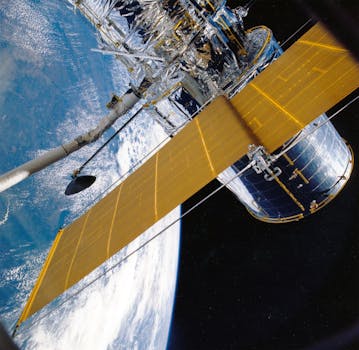Beyond Earth: How Recent Advances Are Shaping Satellite Telecommunications

Beyond Earth: How Recent Advances Are Shaping Satellite Telecommunications
Beyond Earth: How Recent Advances Are Shaping Satellite Telecommunications. The field of satellite telecommunications has experienced significant growth and innovation in recent years. With the increasing demand for global connectivity and the need for reliable communication systems, satellite technology has become a vital component of modern telecommunications infrastructure. Recent advances in satellite telecommunications are shaping the future of communication, enabling faster, more secure, and more efficient data transmission beyond Earth’s surface.
Satellite telecommunications have come a long way since the launch of the first commercial satellite, Intelsat 1, in 1965. The early days of satellite communications were marked by limited bandwidth, high latency, and expensive equipment. However, with the advancement of technology and the introduction of new satellite constellations, the industry has witnessed a significant transformation. The development of advanced materials, propulsion systems, and electronic components has enabled the creation of smaller, lighter, and more powerful satellites.
Advances in Satellite Technology
One of the most significant advances in satellite technology is the development of high-throughput satellites (HTS). HTS satellites are designed to provide high-speed data transmission, with some satellites offering speeds of up to 100 Gbps. These satellites use advanced spot beam technology, which allows for more efficient use of bandwidth and increased capacity. HTS satellites are being used for a variety of applications, including broadband internet, cellular backhaul, and maritime communications.
Another area of advancement is the development of low-Earth orbit (LEO) satellites. LEO satellites are launched into orbit at an altitude of around 2,000 km, which is much lower than traditional geostationary satellites. This lower altitude enables faster data transmission and lower latency, making LEO satellites ideal for applications such as real-time video transmission and satellite-based internet of things (IoT) connectivity.
Applications of Satellite Telecommunications
Satellite telecommunications have a wide range of applications, from consumer broadband and cellular backhaul to maritime and aviation communications. Satellite communications are also being used for disaster response and recovery, providing critical connectivity in areas where traditional communication infrastructure has been damaged or destroyed.
In addition to these applications, satellite telecommunications are also being used for scientific research and exploration. Satellites are being used to study the Earth’s climate, monitor weather patterns, and track natural disasters. Satellite communications are also being used to support space missions, providing critical communication links between spacecraft and ground control stations.
Challenges and Future Directions
Despite the many advances in satellite telecommunications, there are still significant challenges to be addressed. One of the major challenges is the issue of space debris, which poses a significant threat to the long-term sustainability of satellite communications. Space debris can cause collisions with operational satellites, resulting in significant damage and even complete loss of functionality.
To address this challenge, the satellite industry is working on the development of new technologies and strategies for mitigating space debris. This includes the development of de-orbiting systems, which can safely remove satellites from orbit at the end of their lifespan. The industry is also working on the development of more sustainable satellite designs, which can minimize the amount of debris generated during launch and operation.






